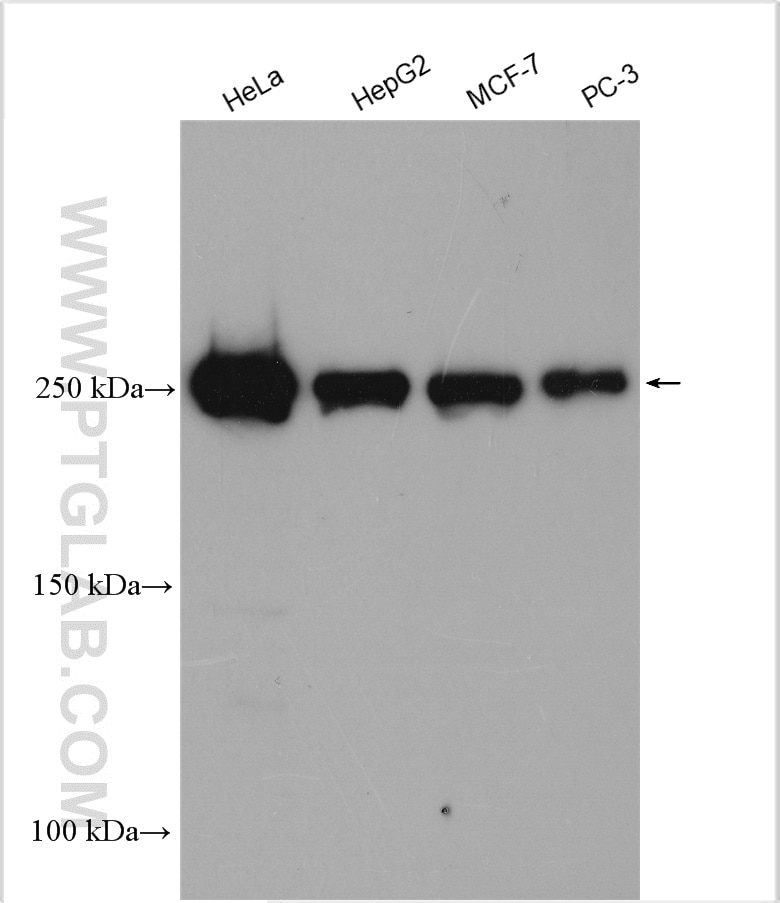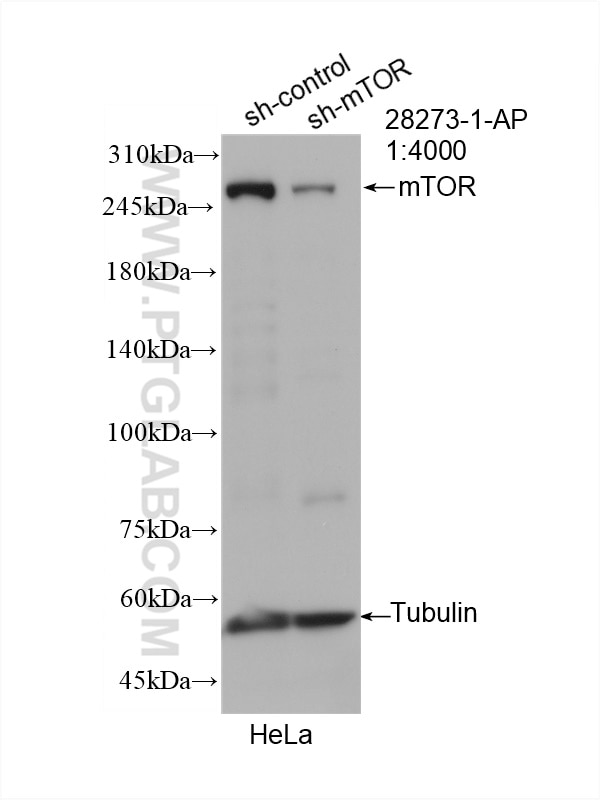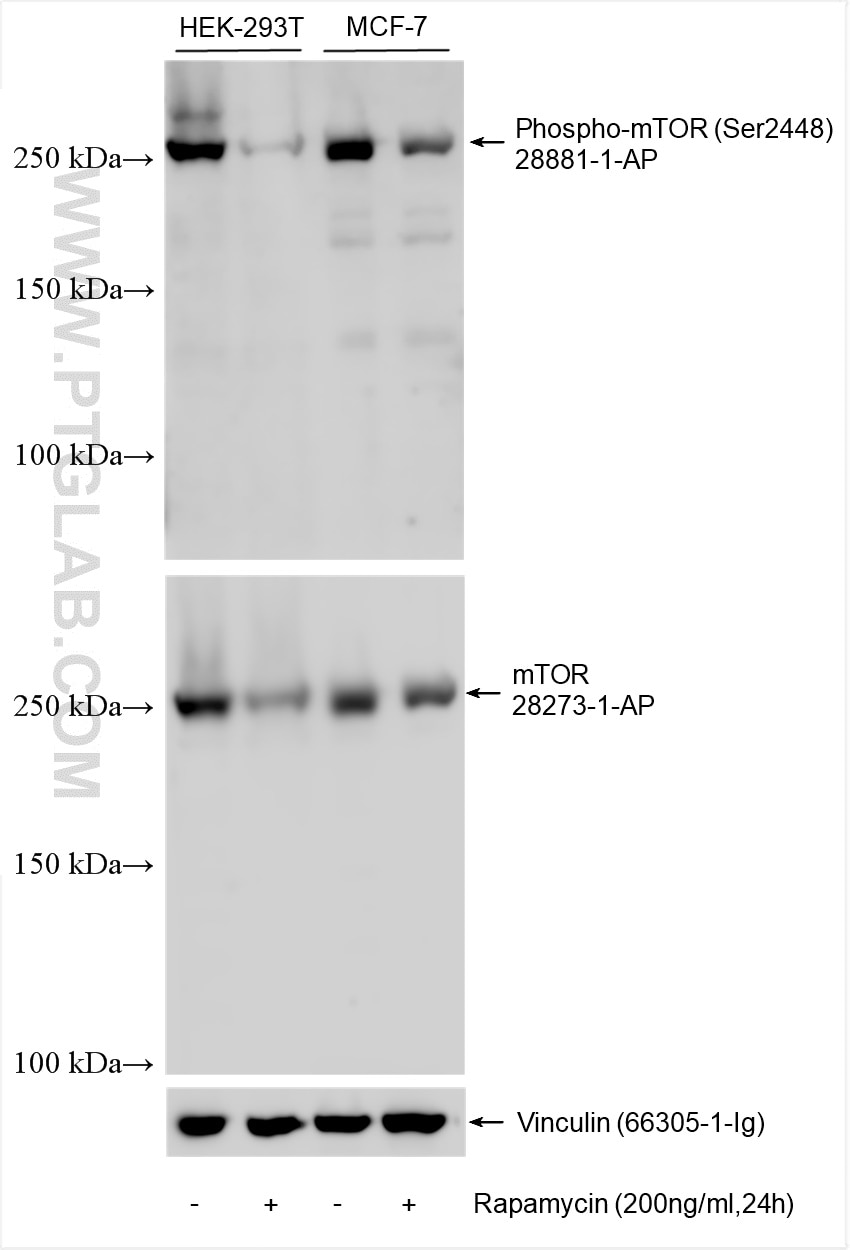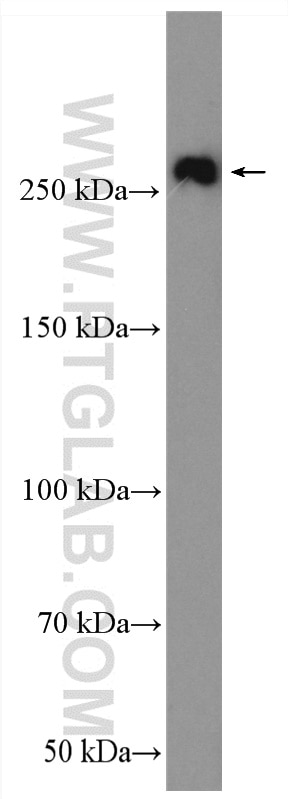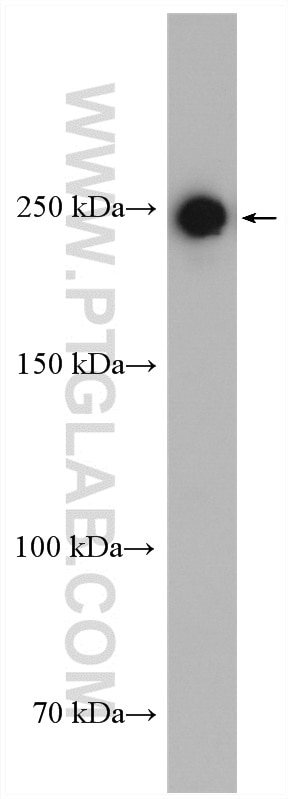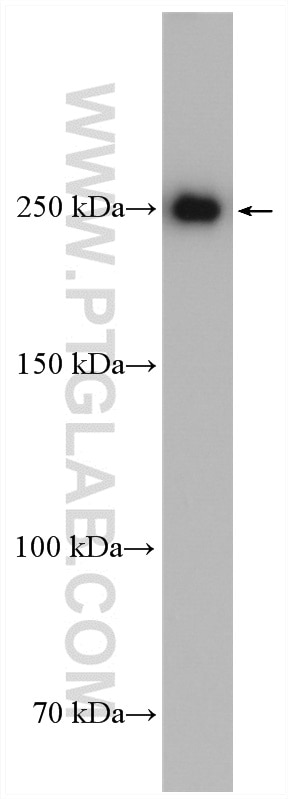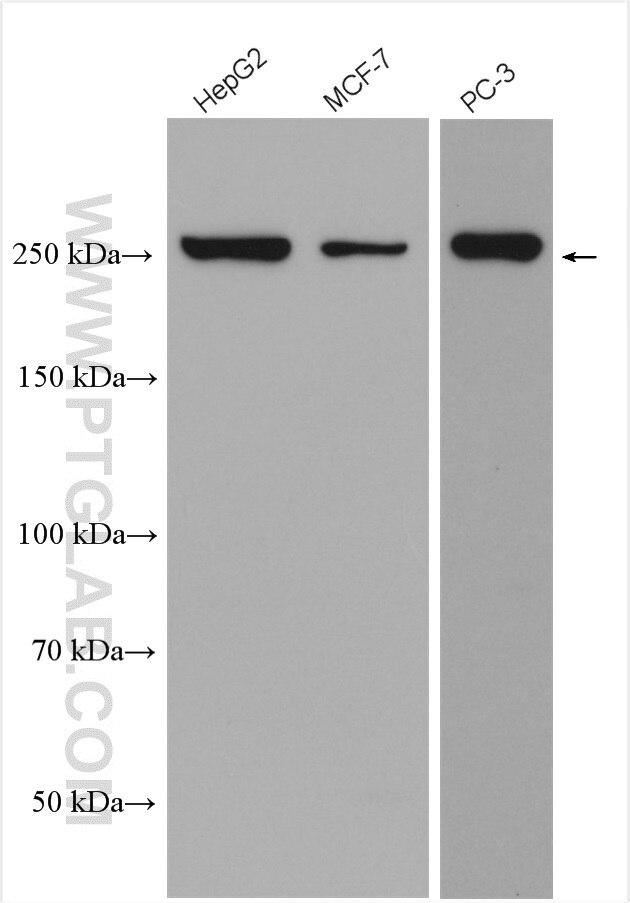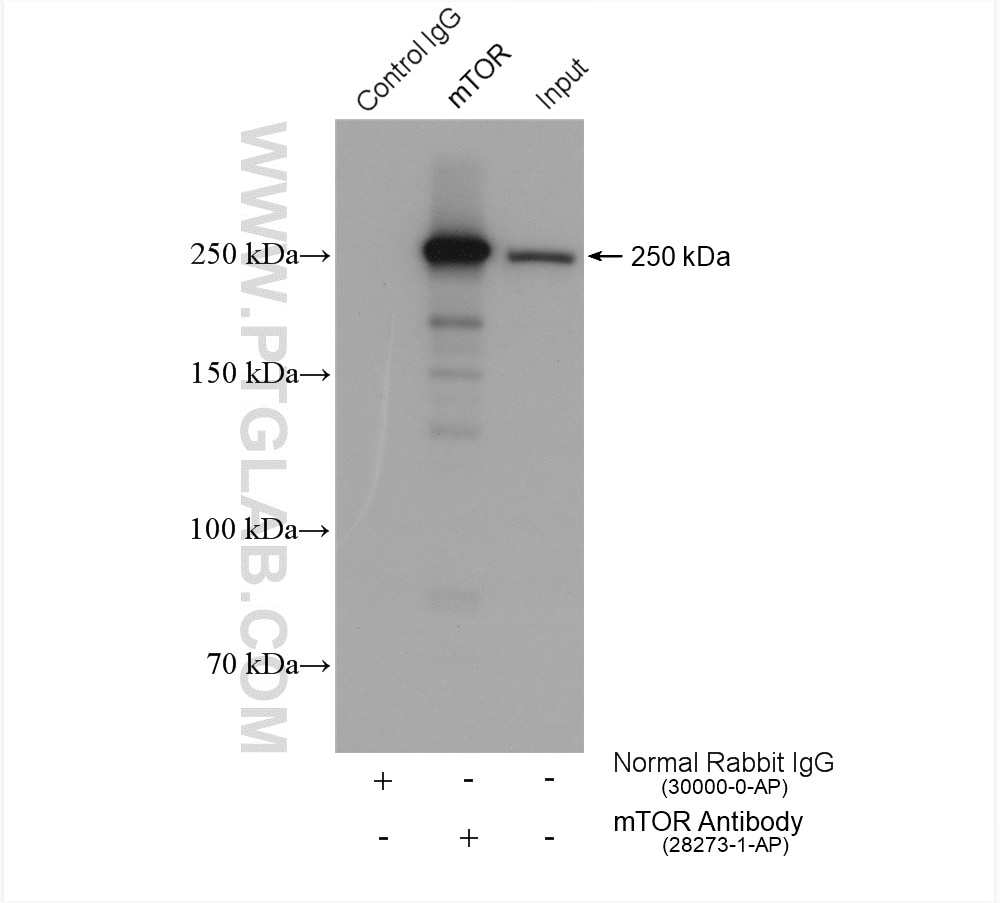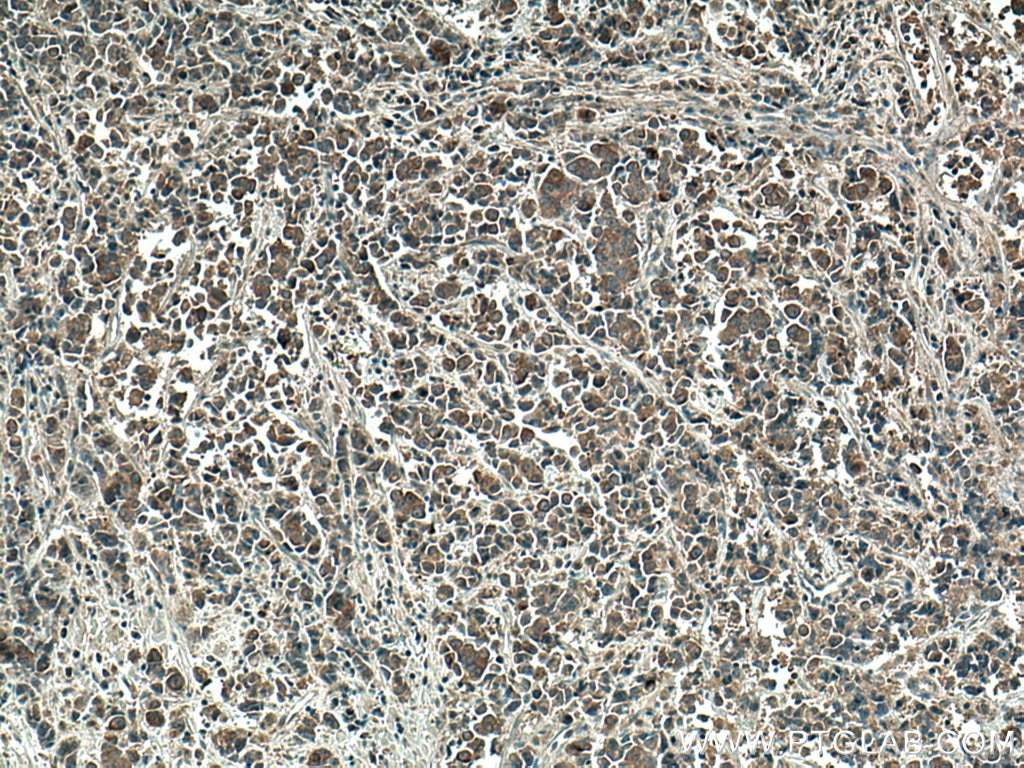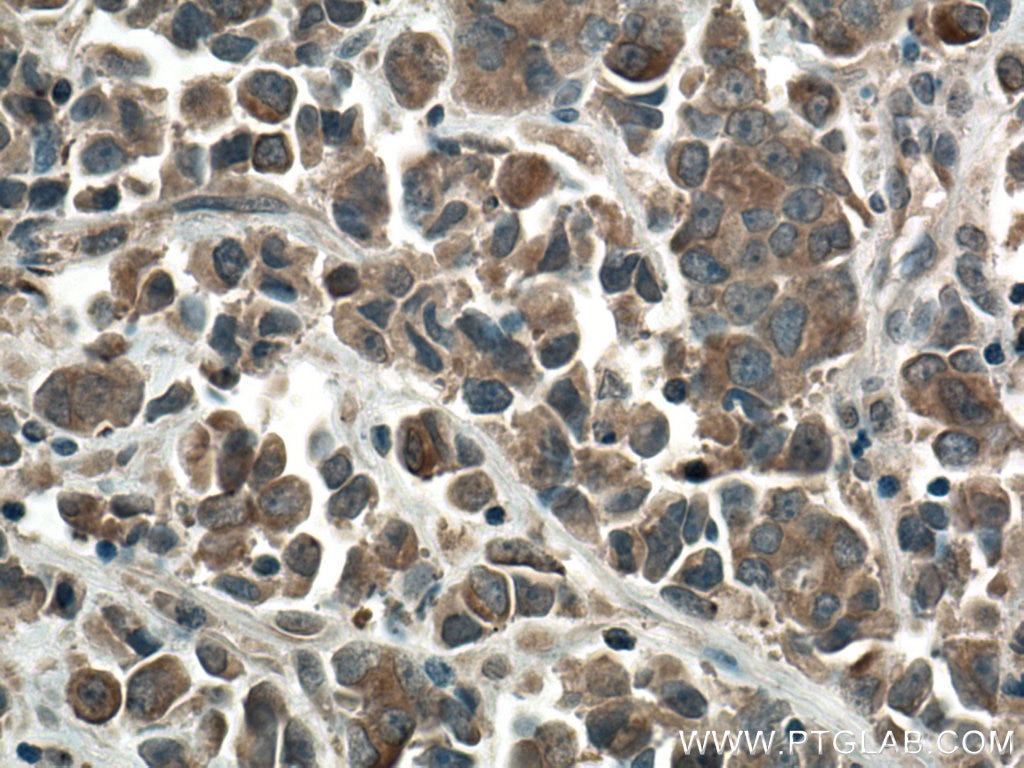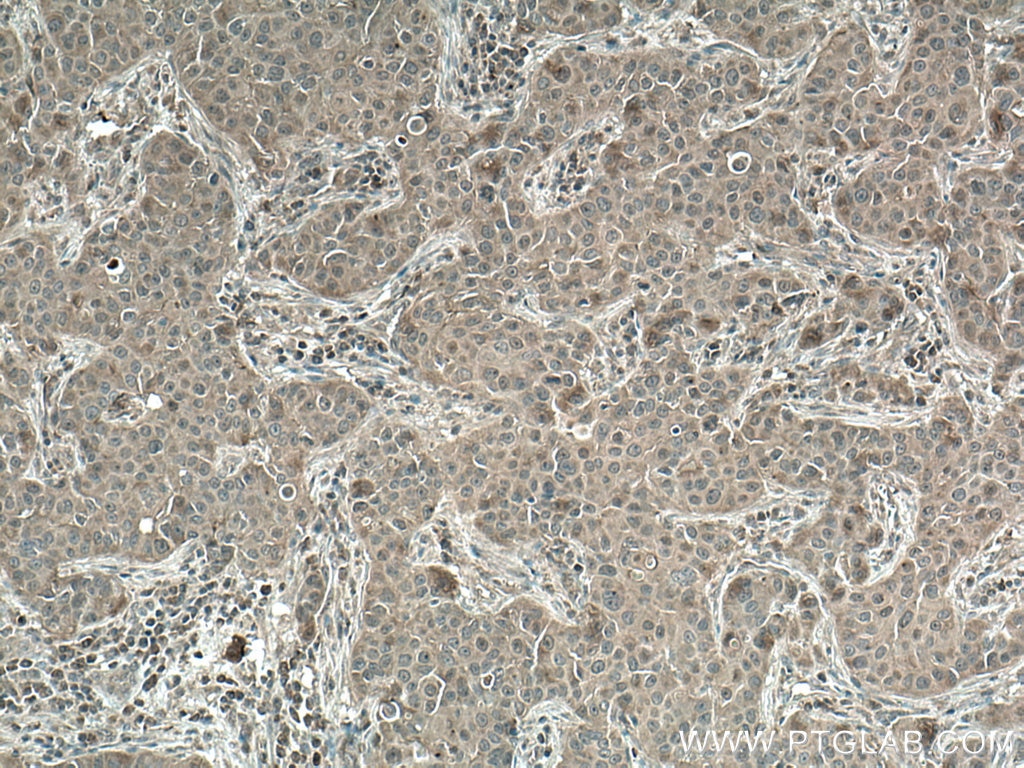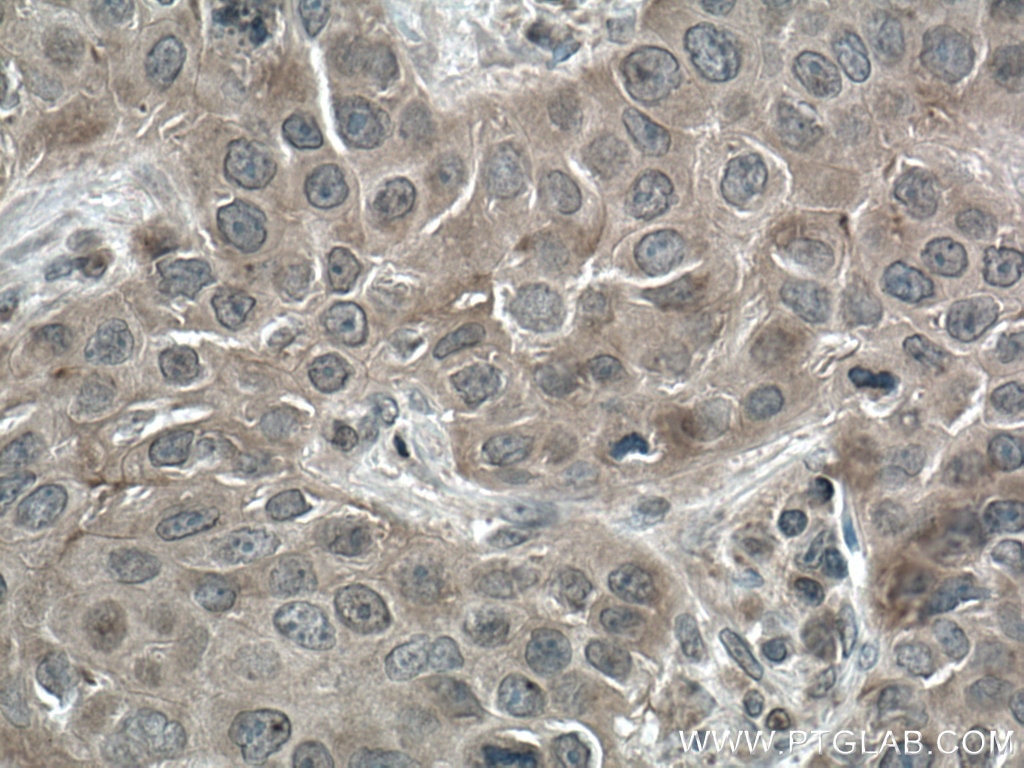- Phare
- Validé par KD/KO
Anticorps Polyclonal de lapin anti-mTOR
mTOR Polyclonal Antibody for IF, IHC, IP, WB, ELISA
Hôte / Isotype
Lapin / IgG
Réactivité testée
Humain et plus (5)
Applications
WB, IP, IHC, IF, Cell treatment, ELISA
Conjugaison
Non conjugué
N° de cat : 28273-1-AP
Synonymes
Galerie de données de validation
Applications testées
| Résultats positifs en WB | cellules HeLa, cellules HepG2, cellules MCF-7, cellules PC-3 |
| Résultats positifs en IP | cellules HeLa, |
| Résultats positifs en IHC | tissu de cancer de la prostate humain, tissu de cancer du sein humain il est suggéré de démasquer l'antigène avec un tampon de TE buffer pH 9.0; (*) À défaut, 'le démasquage de l'antigène peut être 'effectué avec un tampon citrate pH 6,0. |
| Résultats positifs en IF | cellules HeLa, cellules HepG2 |
Dilution recommandée
| Application | Dilution |
|---|---|
| Western Blot (WB) | WB : 1:2000-1:10000 |
| Immunoprécipitation (IP) | IP : 0.5-4.0 ug for 1.0-3.0 mg of total protein lysate |
| Immunohistochimie (IHC) | IHC : 1:50-1:500 |
| Immunofluorescence (IF) | IF : 1:50-1:500 |
| It is recommended that this reagent should be titrated in each testing system to obtain optimal results. | |
| Sample-dependent, check data in validation data gallery | |
Applications publiées
| KD/KO | See 1 publications below |
| WB | See 73 publications below |
| IHC | See 3 publications below |
| IF | See 1 publications below |
Informations sur le produit
28273-1-AP cible mTOR dans les applications de WB, IP, IHC, IF, Cell treatment, ELISA et montre une réactivité avec des échantillons Humain
| Réactivité | Humain |
| Réactivité citée | rat, bovin, Humain, poulet, singe, souris |
| Hôte / Isotype | Lapin / IgG |
| Clonalité | Polyclonal |
| Type | Anticorps |
| Immunogène | mTOR Protéine recombinante Ag28395 |
| Nom complet | FK506 binding protein 12-rapamycin associated protein 1 |
| Masse moléculaire calculée | 289 kDa |
| Poids moléculaire observé | 250-289 kDa |
| Numéro d’acquisition GenBank | NM_004958 |
| Symbole du gène | FRAP1 |
| Identification du gène (NCBI) | 2475 |
| Conjugaison | Non conjugué |
| Forme | Liquide |
| Méthode de purification | Purification par affinité contre l'antigène |
| Tampon de stockage | PBS avec azoture de sodium à 0,02 % et glycérol à 50 % pH 7,3 |
| Conditions de stockage | Stocker à -20°C. Stable pendant un an après l'expédition. L'aliquotage n'est pas nécessaire pour le stockage à -20oC Les 20ul contiennent 0,1% de BSA. |
Informations générales
MTOR, also named as FRAP1, FRAP, FRAP2 and RAPT1, belongs to the PI3/PI4-kinase family. MTOR is a Ser/Thr protein kinase that functions as an ATP and amino acid sensor to balance nutrient availability and cell growth. MTOR is kinase subunit of both mTORC1 and mTORC2, which regulate cell growth and survival in response to nutrient and hormonal signals. mTORC1 is activated in response to growth factors or amino-acids. mTORC2 is also activated by growth factors, but seems to be nutrient-insensitive. mTORC2 seems to function upstream of Rho GTPases to regulate the actin cytoskeleton, probably by activating one or more Rho-type guanine nucleotide exchange factors. mTORC2 promotes the serum-induced formation of stress-fibers or F-actin. MTOR has a calculated molecular mass of 289 kDa, and always can be detected at about 250 kDa due to some modifications (PMID: 14578359).
Protocole
| Product Specific Protocols | |
|---|---|
| WB protocol for mTOR antibody 28273-1-AP | Download protocol |
| IHC protocol for mTOR antibody 28273-1-AP | Download protocol |
| IF protocol for mTOR antibody 28273-1-AP | Download protocol |
| IP protocol for mTOR antibody 28273-1-AP | Download protocol |
| Standard Protocols | |
|---|---|
| Click here to view our Standard Protocols |
Publications
| Species | Application | Title |
|---|---|---|
Proc Natl Acad Sci U S A Heterozygous LRP1 deficiency causes developmental dysplasia of the hip by impairing triradiate chondrocytes differentiation due to inhibition of autophagy | ||
J Nanobiotechnology Regulating immune memory and reversing tumor thermotolerance through a step-by-step starving-photothermal therapy | ||
Int J Mol Sci Piperine Improves Lipid Dysregulation by Modulating Circadian Genes Bmal1 and Clock in HepG2 Cells. | ||
Free Radic Biol Med Advanced oxidation protein products impair autophagic flux in macrophage by inducing lysosomal dysfunction via activation of PI3K-Akt-mTOR pathway in Crohn's disease. | ||
Aging (Albany NY) UPF1 impacts on mTOR signaling pathway and autophagy in endometrioid endometrial carcinoma. | ||
Biochem Pharmacol TANGO1 interacts with NRTN to promote hepatocellular carcinoma progression by regulating the PI3K/AKT/mTOR signaling pathway |
Avis
The reviews below have been submitted by verified Proteintech customers who received an incentive forproviding their feedback.
FH Tianyi (Verified Customer) (01-12-2024) | Antigen retrieval in TE buffer, incubated with AF594 at RT for 2h.
|
